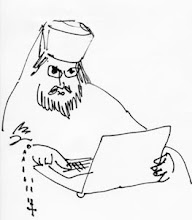
It's a real pity, although not a surprising one, that so little attention is given nowadays to Aleksandr Solzhenitsyn, arguable the world's greatest living author. Now that Soviet Communism is a thing of the past (or so they say) and questions of moral and spiritual importance have been largely trivialized by rampant relativism, there seems to be no place in the public square for a thinker such as Solzhenitsyn. We are all the worse for it. Yet Solzhenitsyn is not simply the great political prophet of the twentieth century; he is also an author of extraordinary depth and eloquence.
Those who have either not read Solzhenitsyn in some time, or who have had the misfortune of never having read him, can find no better starting point than the recently published volume entitled The Solzhenitsyn Reader: New and Essential Writings: 1947 - 2005, edited by Edward E. Ericson, Jr. and Daniel J. Mahoney. Solzhenitsyn himself endorsed this volume in the following words:
I welcome the appearance in print of the Reader, and especially of those selections previously inaccessible to English-language readers. It serves the demand of the modern age for capsule form, yet preserves the integrity of the texts.
Here is an excerpt from his story "The Easter Procession," which takes place in a Moscow church a half century into the Soviet era:
And this is the start of the picture which I would so like to paint, if only I could: the churchwarden's terror that the builders of the new society may close in, jump on him, and beat him up. The spectators can sense his fear.Girls in trousers, holding candles, and boys with cigarettes stuck in their mouths, in caps and unbuttoned coats -- some with immature, moronic expressions of totally unfounded self-confidence; others with simple, credulous faces. A lot of these must be in the picture -- tightly packed, watching a spectacle which cannot be seen elsewhere for any money. Behind the lantern come two men carrying a religious banner, and they too, instead of walking apart, are huddling together from fear.After them come ten women in pairs, holding thick lighted candles. They must also be in the picture, elderly women with faces set in an unworldly gaze, prepared for death if they are attacked. Two out of the ten are young girls of the same age as those crowding round with the boys, yet how pure and bright their faces are. The ten women, walking in close formation, are singing and looking as solemn as though the people around them were crossing themselves, praying, and falling to their knees in repentance. They do not breathe the cigarette smoke; their ears are deaf to the vile language; the soles of their feet do not feel how the churchyard has been turned into a dance floor.And so the real procession begins. A slight tremor runs through the crowd on both sides and the noise has died down a little.The women are followed by seven men, priests and deacons in bright copes. As they are walking out of step and bunched together, they get in each other's way, and there is almost no room to swing their censers or raise the ends of their stoles in blessing. Yet this is the procession in which, had he not been dissuaded from taking part, the Patriarch of All Russia should have walked and conducted the service.The tightly packed little party hurries by -- and that is all there is of the procession.
Click here for an article about Solzhenitsyn's friendship with Fr Alexander Schmemann.









No comments:
Post a Comment